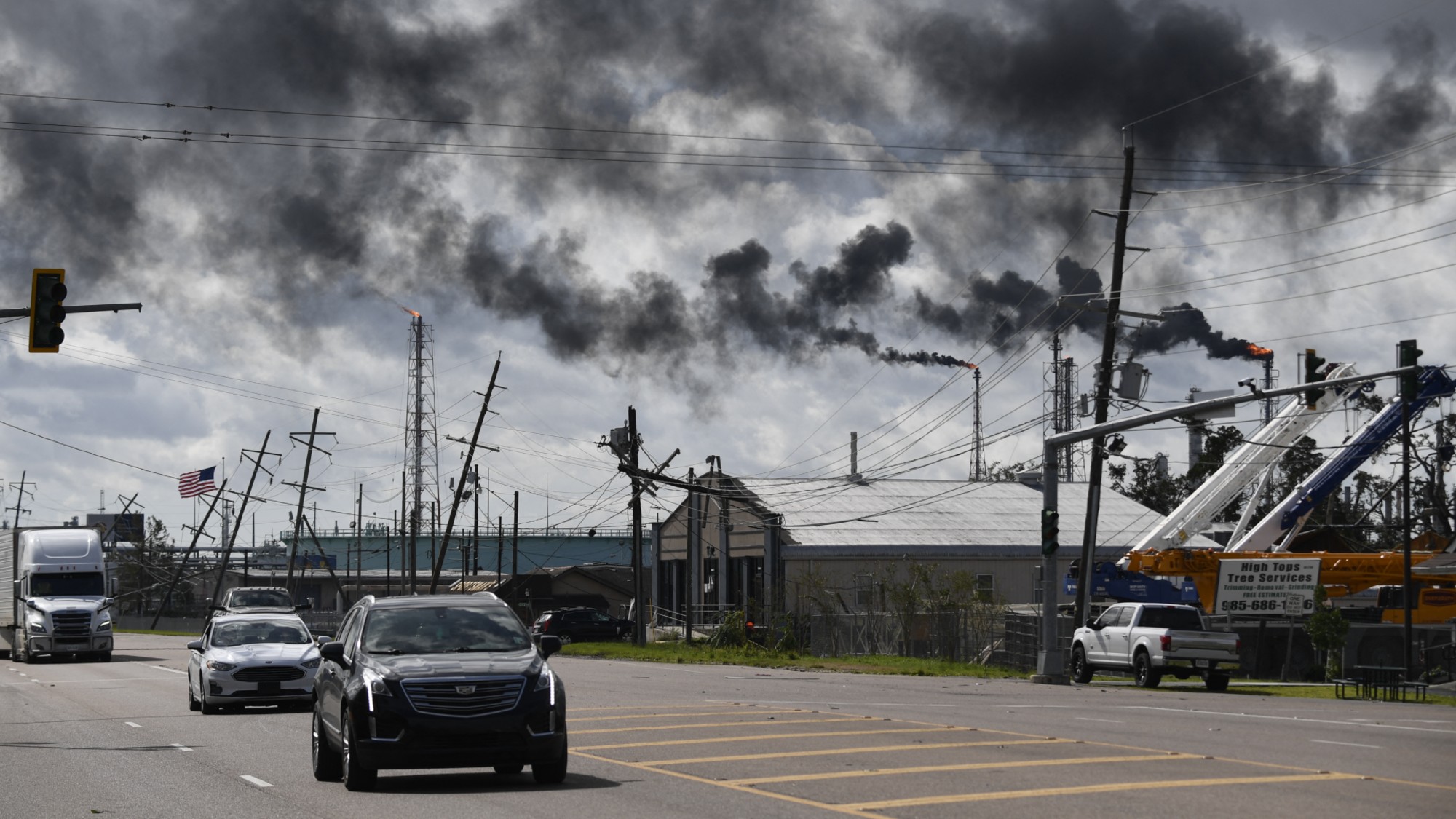Wall Street's secret advantage: High-speed trading
They're unknown and invisible to most of us, but electronic trading programs now rule the stock markets
What is high-speed trading?
It’s Wall Street’s winning edge. By harnessing massive computer power to buy and sell stocks in the blink of an eye, high-speed traders leverage tiny changes in value to make huge profits. The technique was pioneered in the early years of this decade by a hedge fund that hired astrophysicists, mathematicians, and statisticians to devise electronic trading programs. Other firms, including Goldman Sachs and Credit Suisse, quickly followed suit. Few outside the securities industry knew much about the practice until computer glitches helped cause the Dow to plummet 600 points in 15 minutes in May. But high-speed trading—also called high-frequency trading—now accounts for up to 70 percent of all trading in shares listed on the New York Stock Exchange.
What advantage does it provide?
The Week
Escape your echo chamber. Get the facts behind the news, plus analysis from multiple perspectives.

Sign up for The Week's Free Newsletters
From our morning news briefing to a weekly Good News Newsletter, get the best of The Week delivered directly to your inbox.
From our morning news briefing to a weekly Good News Newsletter, get the best of The Week delivered directly to your inbox.
Two-tenths of a second, which is enough to make traders rich. Using a high-speed system, traders can buy into a stock rally or sell into a decline slightly ahead of the pack, gaining a more favorable price than ordinary investors making the same trade a fraction of a second later. The advantage rarely amounts to more than a couple of cents, but compounded over the course of millions of daily transactions, it can add up to tens of millions of dollars. High-speed trading “is where all the money is getting made,” says William Donaldson, former head of the NYSE. “If an individual investor doesn’t have the means to keep up, they’re at a huge disadvantage.”
How does it work?
Automatically. High-speed trading firms, from Wall Street powerhouses like Goldman Sachs to little-known shops with a handful of employees, program their computers to scan markets and exploit ephemeral price differences on the same stock trading on different exchanges. Their computer algorithms automatically generate thousands of transactions per second to profit from a price difference. For a fee, many stock exchanges even allow high-speed traders to get a few milliseconds’ preview of orders of 10,000 or more shares, giving them added incentive to handle unwieldy orders. “It is a rigged game,” says Sal Arnuk of Themis Trading, a brokerage firm. Some high-speed traders go one step further, paying a stock exchange for the right to install computer servers right next to the exchange’s own servers, a practice known as “co-location.”
Does co-location increase speed?
A free daily email with the biggest news stories of the day – and the best features from TheWeek.com
Yes. The physical proximity to the exchange server reduces the time from when a firm’s buy or sell order is entered and when it’s executed. “By co-locating,” says Adam Afshar of Hyde Park Global, a high-speed trading firm, “we are able to take 21 milliseconds off our trades. In the past, 21 milliseconds was a trivial matter. Now it’s a pivotal matter.” Several academic studies have found that shaving even one millisecond off every trade can be worth $100 million a year to a large, high-speed trading firm.
Does this trading distort markets?
Its fans claim it makes them more efficient. In this view, high-speed traders actually perform a valuable service by adding liquidity to the market, meaning they generate so much activity that other market participants can quickly find buyers and sellers for their trades. Critics counter that high-speed traders exploit a costly technological advantage—high-speed computer systems can cost $250 million—to suck unearned profit out of the market. “They’re like locusts,” says professional trader Joe Saluzzi. “They come in, swarm the market, squeeze as much as they can, and when they’re done they’ll just move on to the next market.”
Do small investors get hurt?
Yes, but without knowing it. High-speed traders take some of the profits that would have gone to ordinary, slower investors. Institutional investors, such as pension funds and insurance companies, also suffer. Large institutions conduct multimillion-dollar stock trades, which high-speed traders sniff out using pattern-recognition algorithms. The traders then use their speed advantage to jump ahead of the institutions, buying if the institution is buying, which sends the price up, and selling if it’s selling, sending the price down. This “front-running” reduces returns to big funds’ beneficiaries and pensioners.
Did speed traders cause May’s ‘flash crash’?
Probably. Securities regulators suspect the flash crash started when a clerk entered an erroneous price for a stock-options transaction. High-speed trading algorithms spotted the anomaly and reacted with a cascade of orders to sell the stocks related to the options, sending markets plunging before humans could intervene. High-speed trading, say researchers from the Federal Reserve Bank of Chicago, “has the potential to generate errors and losses at a speed and magnitude far greater” than anything we’ve known in the past. That’s why the major stock exchanges recently installed “circuit breakers” to temporarily halt trading in a stock if its price rises or falls more than 10 percent within five minutes. Even if the breakers succeed in reducing risk, however, they can do nothing to level the high-speed playing field. “The dilemma,” says financial consultant Sang Lee, “is, do we slow down the faster guys or require that the rest of the market speed up?”
The servers that run the world
On May 6, stock traders were in full panic mode. “Guys, this is probably the craziest I’ve seen it down here ever!” shouted a trader on the floor of the Chicago Futures Exchange, amid a frenzied sell-off of stocks. Meanwhile, in a quiet, air-conditioned room in Jersey City, the only sound was a monotonous hum emitted by hundreds of Dell and Hewlett-Packard computer servers. The servers were serenely in charge, spitting out sell orders by the hundreds of thousands. Like a science-fiction film in which robots turn on their creators, the May 6 flash crash appears to have been a triumph of machines over humans. “Why do we pretend that people are in control?” asks Wall Street Journal blogger Evan Newmark. Trillions of dollars in wealth is at the mercy, he says, of “a bunch of computers making ugly, messy love with each other.”
-
 Ex-FBI agents sue Patel over protest firing
Ex-FBI agents sue Patel over protest firingspeed read The former FBI agents were fired for kneeling during a 2020 racial justice protest for ‘apolitical tactical reasons’
-
 The real tragedy that inspired ‘Hamlet,’ the life of a pingpong prodigy and the third ‘Avatar’ adventure in December movies
The real tragedy that inspired ‘Hamlet,’ the life of a pingpong prodigy and the third ‘Avatar’ adventure in December moviesThe Week Recommends This month’s new releases include ‘Hamnet,’ ‘Marty Supreme’ and ‘Avatar: Fire and Ash’
-
 ‘These moves would usher in a future of chemical leaks’
‘These moves would usher in a future of chemical leaks’Instant Opinion Opinion, comment and editorials of the day